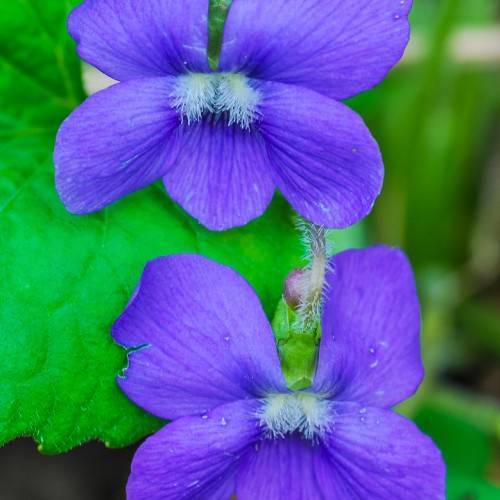
common blue violet
Viola sororia
Cycle:
Herbaceous Perennial
Watering:
Average
Hardiness Zone:
3 - 7
Flowers:
Flowers
Sun:
Partial sun Shade
Soil:
Loamy Clay Humus
Fruits:
Fruits Ready In
Leaf:
Yes
Growth Rate:
Low
Maintenance:
Moderate
Drought Tolerant:
Yes
Care Level:
Medium
watering
Common blue violets typically need to be watered about once a week, keeping the soil heavily moistened but not soggy. If the soil is allowed to dry out, it can cause the plant to become stressed and can even lead to its death. Water the violets in the morning or late afternoon, when the sun is not at its peak intensity, so as not to burn the foliage. If it is dry and hot outside, it may even be necessary to water twice a week.
sunlight
Common blue violets (Viola sororia) need about 4-6 hours of direct sunlight a day, which is best provided in the morning or early afternoon hours. These flowers do best in full sun, but can tolerate partial shade. They are also tolerant of cooler temperatures that might occur in the morning and evening. Too much direct sun can burn their delicate petals, so it is important to protect them from harsh midday sun. When given too much sunlight, the colors of the violets may fade or become distorted.
pruning
Pruning an common blue violet (Viola sororia) is an important part of its ongoing maintenance. Pruning can help to encourage a robust and healthy growth, as well as providing shape and controlling the size of the plant. Prune in early spring, before the plant begins active growth. This will help prevent accidental removal of flowering buds. Cut back the stems of the plant close to the ground, removing all foliage that is diseased or damaged. This will help prevent the spread of disease and promote healthy, new growth. Deadheading flowers once they have finished blooming will also encourage a second flush of flowers.
